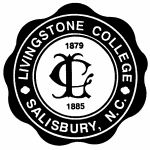Caswell County

- Milton
This list of African American Historic Places in North Carolina is based on a book by the National Park Service, The Preservation Press, the National Trust for Historic Preservation, and the National Conference of State Historic Preservation Officers. [1] Other listings are also online. [2]
| Alamance - Buncombe - Burke - Caswell - Cumberland - Durham - Forsyth - Franklin - Guilford - Granville - Iredell - Johnston - Mecklenburg - Polk - Rockingham - Rowan - Vance - Wake - Warren - Wilson |
Some of these sites are on the National Register of Historic Places (NR) as independent sites or as part of larger historic district. Several of the sites are National Historic Landmarks (NRL). Others have North Carolina historical markers (HM). The citation on historical markers is given in the reference. The location listed is the nearest community to the site. More precise locations are given in the reference.



The African Methodist Episcopal Zion Church, or the AME Zion Church (AMEZ) is a historically African-American Christian denomination based in the United States. It was officially formed in 1821 in New York City, but operated for a number of years before then. The African Methodist Episcopal Zion Church adheres to Wesleyan-Arminian theology.

Livingstone College is a private historically black Christian college in Salisbury, North Carolina. It is affiliated with the African Methodist Episcopal Zion Church. Livingstone College is accredited by the Southern Association of Colleges and Schools to award bachelor's degrees.
Wallace Augustus Rayfield (1874–1941), was an American architect and educator. He was the second formally educated practicing African American architect in the United States.
Samuel M. Plato (1882–1957) was an American architect and building contractor who is noted for his work on federal housing projects and U.S. post offices, as well as designing and building other structures in the United States such as private homes, banks, churches, and schools. During World War II, the Alabama native was one of the few African-American contractors in the country to be awarded wartime building contracts, which included Wake and Midway Halls. He also received contracts to build at least thirty-eight U.S. post offices across the country.

The St. Paul A.M.E. Church is a historic American Gothic Revival style African Methodist Episcopal Church located in Raleigh, North Carolina. A red brick and frame structure built in 1884 by black masons, St. Paul's was the first independent congregation of African Americans in Raleigh and is the oldest African-American church in Wake County, North Carolina. Before the end of the Civil War, the future founders of St. Paul's had been slave members of the Edenton Street United Methodist Church. The members of the church began calling their congregation "St. Paul's" in 1848. The church was listed on the National Register of Historic Places in November 1987 and is also a Raleigh Historic Landmark.

Saint Mary's School is a private independent Episcopal college-preparatory, boarding and day school for girls in grades 9–12. Located in Raleigh, North Carolina, Saint Mary's School operates as an independent school with a historic association with the Episcopal Church including an Episcopal chapel, St. Mary's Chapel, on the school's grounds. The school formerly operated as Saint Mary's College and for many decades educated young women in grades 11–12 and their freshman and sophomore years in college. The school changed to a four year high school in 1998, at which point the name reverted to Saint Mary's School, the original name of the institution when it was founded in 1842.

St. Peter's AME Zion Church is a historic African Methodist Episcopal church located at 615 Queen Street in New Bern, Craven County, North Carolina. It was built between 1923 and 1942, on the site of the 1914 church building which was destroyed by fire in 1922. It is a large three bay by seven bay, rectangular brick church building in the Late Gothic Revival style. It features a gabled nave flanked by two-story truncated stair towers. Also on the property is the contributing 1926 parsonage; a 2+1⁄2-story, frame American Craftsman style dwelling. It is known within the denomination as the "Mother Church of Zion Methodism in the South," and the oldest existing African Methodist Episcopal congregation in the South.

Goler Metropolitan AME Zion Church, originally known as East Fourth Street Baptist Church, is a historic African Methodist Episcopal Zion church located at 1435 E. Fourth Street in Winston-Salem, Forsyth County, North Carolina. It was built in 1924, and is a front-gabled brick church with two prominent domed towers and flanking one-story hipped-roof wings in the Classical Revival style. The front facade features a prominent pedimented porch supported by stuccoed Doric order columns and Ionic order pilasters. The interior is based on the Akron Plan. The building was acquired by an African-American congregation split from the Goler Memorial African Methodist Episcopal Zion Church in 1942. The congregation changed their name to Goler Metropolitan A.M.E. Zion Church in 1953.
Hobart Brown Upjohn (1876–1949) was an American architect, best known for designing a number of ecclesiastical and educational structures in New York and in North Carolina. He also designed a number of significant private homes. His firm produced a total of about 150 projects, a third of which were in North Carolina.

St. David African Methodist Episcopal Zion Cemetery is a historic cemetery located in the Eastville community of Sag Harbor, New York. It is anchored by the AME church, the Eastville Historical Society House on NY 114 and the St. David Cemetery. The site has around 100 graves, including that of Reverend J. P. Thompson, the first pastor of the St. David AME Zion Church.

The Mary E. Bell House is a historic house at 66 Railroad Avenue approximately 1/10th mile south of the Long Island rail road in Center Moriches, Long Island, New York. Built in 1872 by Selah Smith of Huntington who purchased the land, it is significant in the area of ethnic history for the Smith and Bell families and the African-American AME Zion community of Center Moriches during the nineteenth and twentieth centuries. It was listed on the National Register of Historic Places in 2020. It is under the Stewardship of the Ketcham Inn Foundation.
The African American Cultural Heritage Action Fund is a program formed in 2017 to aid stewards of Black cultural sites throughout the nation in preserving both physical landmarks, their material collections and associated narratives. It was organized under the auspices of the National Trust for Historic Preservation. The initiative which awards grants to select applicants and advocates of Black history has been led by architectural historian Brent Leggs since 2019. It is the largest program in America to preserve places associated with Black history.